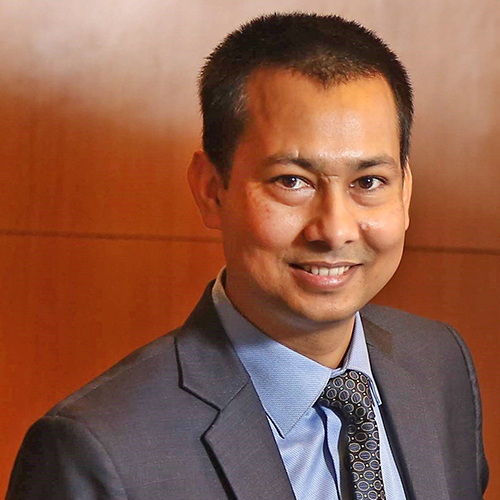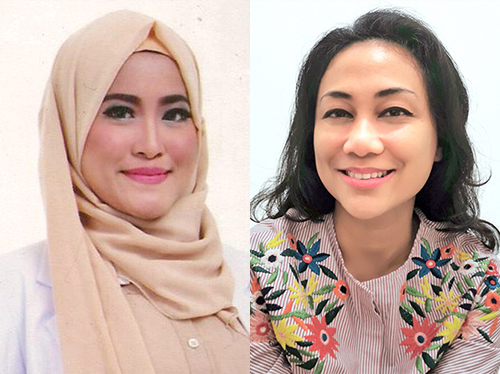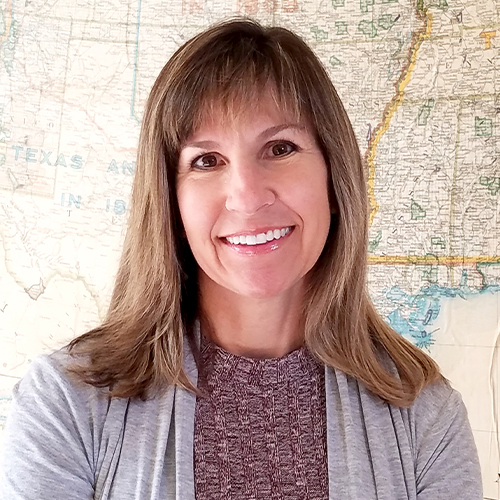GOLD Learning Tongue-tie Online Symposium 2021 - Day 2 Advancing Our Understanding
Welcome to the GOLD Learning Tongue-tie Symposium for 2021! 6 expert speakers dive deeper into the complex topic of oral restrictions in infants. Learn about new perspectives on how we measure a "complete" release after frenotomy, bleeding post division, re-attachment and re-release, a chiropractic approach to tongue-tie and the PIPS technique, and the difference between the active wound management stage and the neuromuscular re-education phase after frenotomy.
The presentations will leave you feeling more confident and armed with clinical skills that you can put into practice right away to help the families in your care. This program is approved for 5 CERPs (5 L-CERPs) and Dietetic CPEUs.
All presentations are available.
Group Registration: Receive additional discounts when you register a group of 10 or more. Contact us at [email protected] to learn more or submit your group.
Learn more about Day 1 of the Tongue-tie Symposium on Fundamental Skills here. Explore the fundamentals of providing care to infants and young children with oral restrictions and their families. Learn more about the research that is currently available, the bigger picture of assessment for tongue-tie, the importance of anticipatory care, how to create a holistic team approach to caring for families and the virtual care of families with tongue-tied babies.


Dr. Ankur Bio Update - Dr. Kumar Ankur, MD, DNB is working as an Associate Director & Head of the Department of Neonatology at BLK MAX Super Speciality Hospital Delhi, India. He has been working in the field of neonatology with private and non-goverment organisations for improving neonatal healthcare in the country. He is the national faculty and trainer for FBNC (Facility based neonatal care), Neonatal Resuscitation, Kangarroo Mother Care (KMC) and the national assessor for Neonatology Fellowship accreditation programme of India. He has been invited as an expert speaker, faculty, chairpersons for various national and state level conferences and workshops. He has many publications in national & international journal and authored many chapters, guidelines published by Indian Academy of Pediatrics & National Neonatology of Forum Delhi & India. He is also the co-editor of Handbook of Neonatal Clinical Practices. He is also running training program in neonatal Fellowship for postgraduate students & neonatal nurses. Currently he is also the Secretary of prestigious National Neonatology Forum, Delhi. National Neonatology Forum (NNF) is a strong and large body of more than 8000 neonatologists across India and abroad. NNF has been actively involved in advocacy, policy making, research and ensuring quality health care to newborn for the last 4 decades. He had been past Secretary (2014) & President (2018) of Indian Academy of Pediatrics (IAP), Central Delhi Branch.
Topic: Tongue-Tie and the NICU: A Neonatologist Perspective - [View Abstract]
1. Describe the epidemiology & Indian Perspective of tongue-tie.
2. Recognize when tongue-tie can potentially cause problems.
3. Describe diagnostic features & what to look for in tongue-tie in NICU infants, especially with hypernatremic dehydration or jaundice.
4. Identify possible treatment for the late preterm baby with suspected tongue-tie.
5. Describe nonsurgical treatment options and the importance of looking at the baby holistically rather than just the oral cavity.
6. Describe how to determine when surgery/frenotomy is necessary.
Tongue Tie is an interesting clinical subject with extreme variability in understanding among lactation consultants, neonatologists, pediatricians, speech therapists, pediatric surgeons, and dental/oral surgeons. There is still no consensus on diagnosis and mode of treatment. However, in recent years there seems to increase reliance on cutting the tie despite the lack of robust evidence. As clinicians, we should always give an unbiased approach towards any neonate's feeding-related problem. Holistic systems like simple bodywork and prolonged skin-to-skin contact, and family involvement can often resolve infant feeding issues. Family-centered care (FCC), based on collaborative participation of the family and a team of health care providers, is found to increase infants' well-being in neonatal critical care units. Our own postgraduate student did her dissertation To Determine the Prevalence of Lingual Frenulum in Infants ≥ 1800 grams of Birth Weight Affecting Breastfeeding (Submitted for Publication). We shall be sharing the Indian data and providing more information about the prevalence of tongue-tie in the NICU, how to distinguish between tongue-tie and other common feeding issues in neonates and the importance of holistic care.


Okky Nafiriana, MD is a member of Praborini Lactation Team, Indonesia.
She believes breastfeeding is the best way to feed and nurture baby.
But breastfeeding not always comes easy. Experienced breastfeeding her 2 daughters who were born with tongue and lip tie, made her realize the problems came with the ties and support frenotomy.
She currently works as a lactation counselor in Permata Depok Hospital and Puri Cinere Hospital, Indonesia, where she meets parents and educates the benefit of breastfeeding. She loves to study and currently pursued her dreams to deepen her knowledge in lactation.
Ratih Ayu Wulandari, MD, IBCLC is a
member of Praborini Lactation Team, Indonesia.
She believes breastfeeding is the best way to feed and nurture baby, therefore she became a breastfeeding counselor in 2012 and then IBCLC in 2014.
Experienced breastfeeding her three tongue-tied babies, she understand the pain and support early frenotomy.
She is practicing frenotomy for tongue-tie and lip-tie in Puri Cinere Hospital Depok Indonesia and a private practice. Her publications are including articles for international journal and books for mothers. Japan society of ADEL acknowledges her as Specialist of ADEL (Ankyloglossia with Deviation of Epiglottis and Larynx).
1. This presentation will help delegates to understand what marasmus and kwashiorkor are and how they impact baby’s growth and development.
2. This presentation will help delegates to understand what ankyloglossia is and how it may impact infant feeding.
3. This presentation will help delegates to understand how simple frenotomy and supplementation with pasteurized human donor milk can help a baby to recover from illness and reach good development even in cases of severe malnutrition.
Successful breastfeeding depends on an infant’s latching onto the mother’s breast correctly. A poor latch will cause insufficient milk transfer that will cause poor growth. Each type of mammals produces different components of milk which make it species specific, which adjust to their needs, growth rate and breastfeeding habits. Human breast milk has many benefits for human babies because it contains various substances both as nutrition and as protection.
The authors present two infants who suffered ankyloglossia, which hindered the baby’s ability to breastfeed and eat solid food. These babies were diagnosed with marasmus and kwashiorkor (severe malnutrition). After revision of both the lip- and tongue-ties, supplementation with pasteurized human milk donor, and good complimentary feeding the babies finally reach an optimal growth and development. Learn more about how these two cases were managed to bring the babies back to health.


Upon becoming a mother and struggling through breastfeeding both of her babies, René first began supporting breastfeeding as a peer counselor, with a desire to help others as she was helped, and continues to support families in this way. She became an IBCLC and started her private practice, First Food For Baby, to provide professional lactation care a few years later. Recognizing the need to serve underinsured and marginalized families, she founded the Phoenix based 501(c)(3) non-profit organization, American Breastfeeding Foundation, in 2020 that will one day reach and support families nationwide, facilitating specialized care for underserved populations.
René loves helping families through their unique breastfeeding journey, providing guidance to avoid complications and empowering them to exceed their goals. She welcomes the challenge this brings, from the complexities of airway issues to feeding position experimentation. She cherishes the loving interactions between babies and their parents. She considers it an honor to be trusted with each precious new life and to witness the intimacy and beauty that is breastfeeding. She bases her foundational knowledge on evidence-based data and research but realizes that the human experience she’s has learned over the past 25 years is equally important.
1.Describe how a baby breathes directly influences growth, development and overall health.
2. Recognize sleep disordered breathing symptoms exhibited.
3. Describe some ways to begin to change the course of breathing and airway issues, including frenotomy.
This presentation is focused on infant airway as it relates to tongue-tie. Participants will learn to recognize subtle, unhealthy deviations from normal, healthy breathing, including general tongue presentation and breathing patterns (especially before and after tongue-tie release). This is important for many reasons but could be helpful in contributing to optimal frenectomy outcomes and avoiding regression. Additionally, the importance of identifying at risk infants to help avoid common misdiagnosis and labelling that is more often actually struggle with breathing and sleep will be discussed, all of which ultimately optimize breastfeeding outcomes and health for the lifespan.


Catherine Watson Genna BS, IBCLC is an International Board Certified Lactation Consultant in private practice in New York City. Certified in 1992, Catherine is particularly interested in helping moms and babies breastfeed when they have medical challenges and is an active clinical mentor. She speaks to healthcare professionals around the world on assisting breastfeeding babies with anatomical, genetic or neurological problems. Her presentations and her writing are enriched by her clinical photographs and videos. Catherine collaborates with Columbia University and Tel Aviv University Departments of Biomedical Engineering on research projects investigating the biomechanics of the lactating nipple and various aspects of sucking and swallowing in breastfeeding infants. She is the author of Selecting and Using Breastfeeding Tools: Improving Care and Outcomes (Praeclarus Press 2009) and Supporting Sucking Skills in Breastfeeding Infants (Jones and Bartlett Learning 2008, 2013, 2017) as well as professional journal articles and chapters in the Core Curriculum for Lactation Consultant Practice and Breastfeeding and Human Lactation. Catherine served as Associate Editor of the United States Lactation Consultant Association’s official journal Clinical Lactation for its first seven years.
Topic: Breastfeeding Strategies for Tongue-tied Infants - [View Abstract]
Topic: Critical Assessment of Apparent Tongue-Tie - [View Abstract]
Topic: Introduction to Cervical Auscultation - [View Abstract]
Topic: Lactation Support for Infant Biomedical Challenges - [View Abstract]
Topic: Organization of tongue movements before and after frenotomy for posterior tongue-tie: an Ultrasound analysis - [View Abstract]
Topic: Positioning and Latch for Breastfeeding - [View Abstract]
Topic: Ultrasound Analysis of Sucking: Tongue-Tie and Confounders - [View Abstract]
Topic: Using Breastfeeding Supplementers - [View Abstract]
1. Discuss the importance of both a deep, stable latch and the infant’s own tongue mobility in normal sucking.
2. Describe how the anterior and mid-tongue move differently during normal breastfeeding.
3. List two differences between tongue movements in tongue tied infants before frenotomy and those of normal infants.
4. Discuss the differences in tongue movements in tongue-tied infants versus those with congenital muscular torticollis.
Ultrasound is a useful tool in our quest to understand both normal sucking and breastfeeding impairments. Research depends on both accurate classification of subjects and breastfeeding best practices. This webinar presents findings from our studies of the organization of tongue movements in space and time during breastfeeding using an objective methodology, highlighting some important considerations when conducting or assessing research.


Michale is an Integration visionary with a discerning view of the ancient and an eye on the future. She created one of the first on site integrated care clinics for Tongue Tie treatment 10 years ago that included Lactation support, Body nervous system and movement work, Laser tongue tie release and cranio-facial anticipatory growth guidance. She currently mentors Integrative practitioners in Wayfinding methods which allow practitioners to tap into their unique gifts and learn to incorporate them into practice.
1. The attendee will describe a working definition of trauma.
2. The attendee will be able to describe how to apply compass concepts to tongue-tie care.
3. The attendee will be able to describe a 'map' to the terrain of trauma with initial sequences of care.
The field of tongue-tie treatment is rapidly changing, and great strides have been made over the years to create sequencing of care to ensure predictable outcomes related to the achievement of optimal oral function after tongue-tie release. Despite this, there are times when a frenectomy does not seem to “work”, “help” or make a significant difference. This is frustrating for families and can leave health care professionals wondering what to do next. This presentation will discuss screening for trauma as a way to improve frenectomy success. Learn more about the impact of collective trauma on the infant’s nervous system and the importance of the timing of frenectomy along with the sequencing of pre, intra and post-op habilitative care to increase outcome success.
Accreditation
CERPs - Continuing Education Recognition Points
GOLD Conferences has been designated as a Long Term Provider of CERPs by the IBLCE--Approval #CLT114-07. This program is approved for 5 CERPs (5 L-CERPs).
Dietetic CPEUs - Continuing Professional Education Units:
Applicable to Dieticians & Nutritionists, this program is approved for 5 Dietetic CPEUs by the Commission on Dietetic Registration - the credentialing agency for the Academy of Nutrition and Dietetics.
If you have already participated in this program, you are not eligible to receive additional credits for viewing it again. Please send us an email to [email protected] if you have any questions.
Tags / Categories
(IBCLC) Clinical Skills, (IBCLC) Education and Communication, (IBCLC) Equipment and Technology, (IBCLC) Infant, (IBCLC) Pathology, (IBCLC) Techniques, Breastfeeding the Tongue Tied Infant, Differential Diagnosis & Management, Tongue & Lip Tie Assessment
How much time do I have to view the presentations?
- The viewing time will be specified for each product. When you purchase multiple items in your cart, the viewing time becomes CUMULATIVE. Ex. Lecture 1= 2 weeks and Lecture Pack 2 = 4 Weeks, you will have a total of 6 weeks viewing time for ALL the presentations made in that purchase.
- Time for viewing the talks begins once you purchase the product. For Live Webinars & Symposiums, the viewing period begins from when the live event takes place. Presentations can be accessed 24/7 and can be viewed as many times as you like during the viewing period.
What are bundled lectures?
- Presentations may be available individually or via a bundled package. Bundled lectures are a set of lectures that have been put together based on a specific category or topic. Some lectures will be available in both individual and lecture form, whereas others will be available only via a bundled lecture pack.
Will there be Handouts?
- YES! Each lecture comes with a PDF handout provided by the Speaker.
Some lectures include a Q&A, what does that mean?
- During our online conferences, presentations that occur live are also followed by a short 15 minute Question & Answer Session. The Speaker addresses questions that were posted by Delegates during the presentation. We include the recording of these Q&A Sessions as a bonus for you.
How can I receive a Certificate?
- If this presentation offers a certificate, once you are done viewing the lecture or the lectures within a bundle, submit your attendance record in order to be able to download your certificate. You'll be able to see which credits are offered for the lecture by hovering over the "Credits Available" link within the "Speakers & Topics" tab.
Professionals that selected this package also viewed

|
|

|










